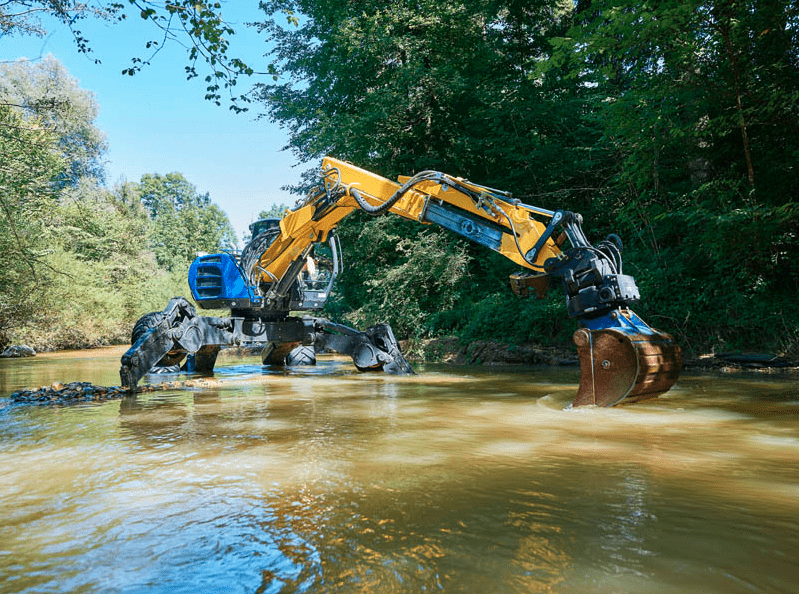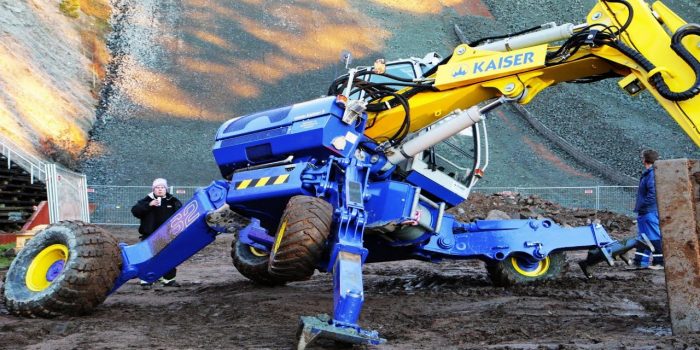Spider excavators are fierce, robust, and reliable machines ready to work in any type of environment, whether it’s in deep water, a forest, or uneven terrain with steep slopes. The rotating platform on which the operators sit, along with leg-like extensions, ensures versatility and stability.
Despite the extreme capabilities of spider machines and their unusual looks, most people don’t even know about their existence. Those crazy-looking vehicles were invented in 1966 by Edwin Ernst Menzi and Joseph Kaiser. The idea behind the invention was to build a truck that could access areas that traditional excavators couldn’t, like mountain slopes. Menzi Muck AG and Kaiser AG are the leading spider excavator manufacturers today.

Spider excavators (also known as walking excavators) take a firm place in the category of extraordinary machines. Inspired by the mesmerizing and complex nature of spiders, an arachnid-like vehicle has been designed, and the result is simply epic! Have a look at the most fearless and powerful spider machines—a ranking prepared by TradeMachines.
These excavators were originally designed to operate on the extreme gradients and difficult terrain of the Swiss Alps, where regular wheeled and tracked excavators could be flat-out dangerous. They started with a simple single-axle pair of wheels on the back and a pair of set feet on the front, getting around by using the hydraulic arm and bucket to lift the legs and drag the wheels around.
They are not, however, hugely popular—or even particularly well known—because for 99% of jobs, regular, cheaper tracked or wheeled excavators do the job just fine. Their monstrous hydraulics require heavy and regular maintenance, adding to the operating cost. And as you might imagine, it’s an epic challenge to learn to drive a machine with such massively broad and unusual capabilities. As one Australian owner/operator quipped to Machines4U, at least you don’t need to worry about them getting stolen.
Their enormous hydraulics need regular, substantial maintenance, which raises the expense of operation. And as you can probably guess, learning to operate a vehicle with such extraordinarily vast and varied capabilities is an enormous challenge.


